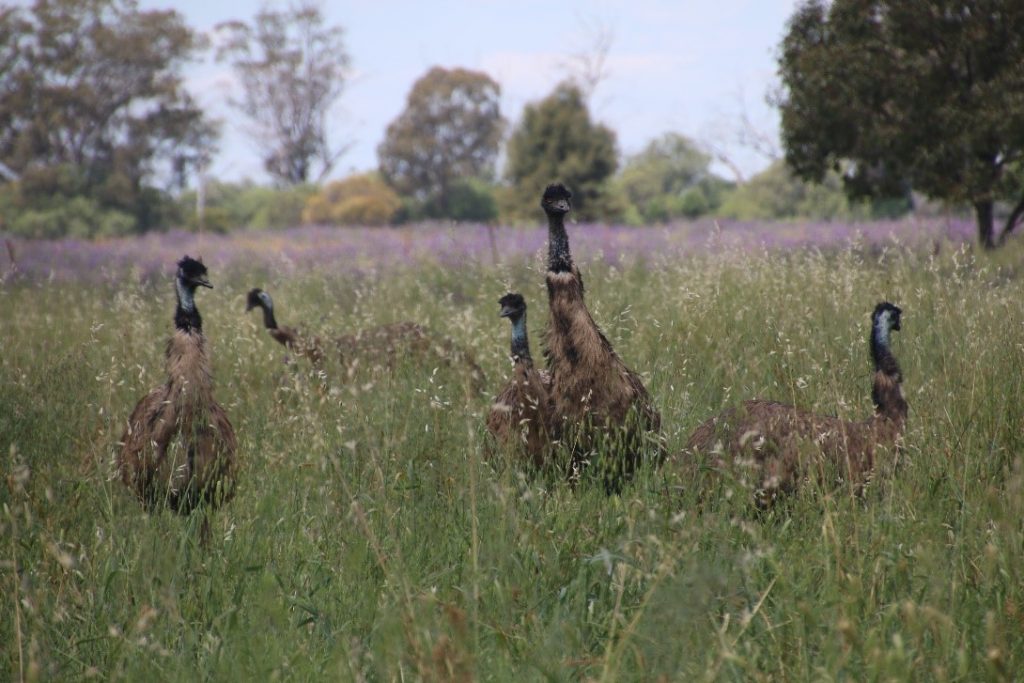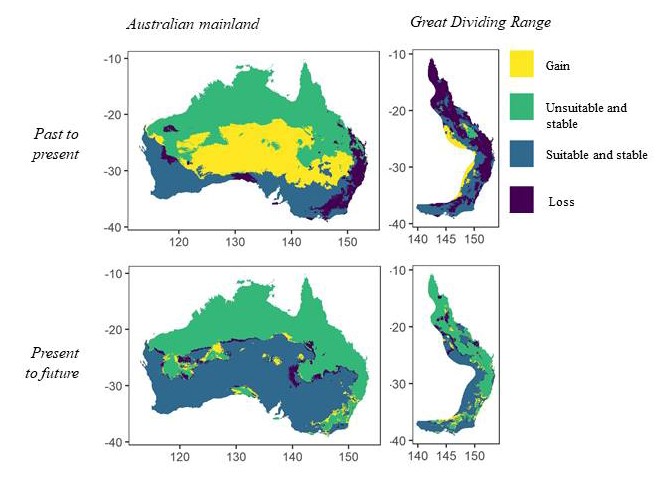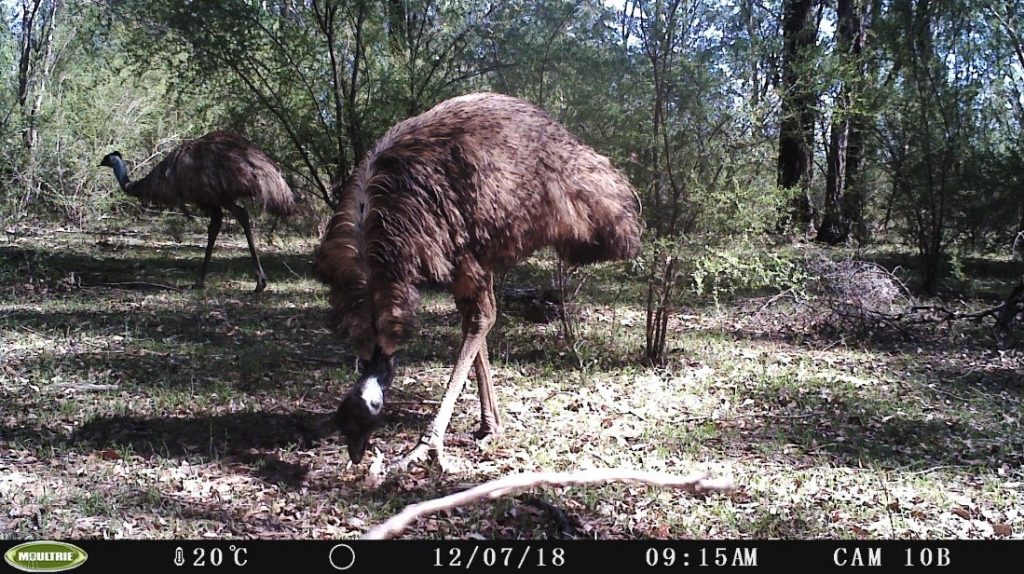Emus are iconic. They join Kangaroos on the Australian coat of arms and are an essential part of any visit to the outback. They are also among the last of the Australia’s giant animals, or megafauna, giving us a window on Australia’s past giants.

The emu is a member of a unique, ancient group of birds known as ‘ratites’ – flightless but widely distributed, spanning all southern hemisphere continents. This group includes species such as the ostrich, rhea, kiwi, cassowary and tinamou. The ratites are one of the most pre-historic groups of birds, in part because they are highly adaptable.
Emus have persisted in Australia through thousands of years; but anecdotal evidence suggests they are less common than they used to be. Increasing urbanisation and the removal of emus from farming lands means this species isn’t as widespread as it once was.
With populations condensing we begin to ask where will be the safe haven for emus in the future? It turns out answering this simple question is harder than you’d think.
Every species has an area across which it can be found – a ‘geographic distribution’. Knowing exactly where this is helps us develop an understanding of the species, how it may adapt over time, and assist in decision making about conservation. For example, if a species only lives in a small area, it may be of larger concern compared to species that can be found all over the country, across a wide range of habitats and climates.
Australia’s climate has changed over many thousands of years, and the species that live here have moved with it. The country has been subject to long periods where it was wetter or drier, and where sea levels were lower or higher. This begged a series of questions – how have emus adapted to these changes, being one of the most pre-historic species? What effect have these changes had on where emus can live? How will this change with further human impact on the environment?

To answer these questions, we turned to a method called ‘species distribution modelling’ (SDM). SDMs take maps of where an animal has been seen and combines them with information about the environment at these locations, such as the climate (temperature and rainfall) and habitat (e.g. vegetation available and land uses). These combine to make a ‘prediction map’ of where a species can be found. The more sightings of a species there are, the more accurate these maps are likely to be.
Fortunately, Emus are one of the most easily identified species and people love taking pictures of them! In fact, citizen scientists routinely record between 5,000 and 30,000 emu sightings every year across Australia. These sightings are collected and stored in a single place –the Atlas of Living Australia (https://www.ala.org.au). Here, they can be freely viewed and downloaded by anyone.
With these data, we built a model that shows the climate and habitat that emus prefer today; where suitable climate was 6,000 years ago; and where it will be in 50 years’ time.
We found that in the past 6,000 years, emus have made vast shifts inland across central Australia. These shifts have been driven mostly by climate, with emus minimally influenced by environmental factors such as habitat type, distance from water, land use types or fire frequency. These changes have greatly expanded the emu’s range and are predicted to remain stable over the next 50 years.
At the same time, however, emus have progressively been lost from the east coast. Now on the edge of their climatically suitable range, east coast emus are likely to be more susceptible to other threats, such as poor reproductive success due to predation by feral animals on the eggs and chicks.

Emu disappearance across the east coast is unlikely to make the species vulnerable to the threat of extinction, because of the stability of their overall expansive range. However, the local extinction of emu populations across the east coast could have ecosystem wide implications.
Emus can travel up to 100km a year and move the seeds of native plants huge distances with them as they go. Without emus, many plant species will find it harder to disperse to new habitats or share genetic material between isolated plant communities. Combined with other threats such as habitat loss and predation by introduced species, our east coast plant communities could soon be in trouble.
Just as poignant, though, is the importance of emus in Australian culture, both in European and Indigenous histories. The emu is a totem to many indigenous groups and is shown on the Australian coat of arms.
Across the east coast where urbanisation is progressing rapidly, encountering a species such as the emu gives many Australian’s an important connection to nature that can help inspire conservation efforts for our lesser known, declining fauna.
For more information, read the full journal article Past and future potential range changes in one of the last large vertebrates of the Australian continent, the emu Dromaius novaehollandiae